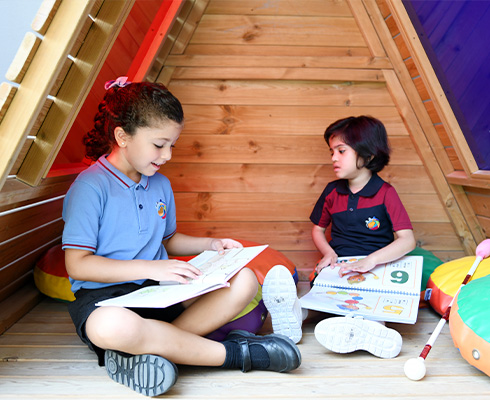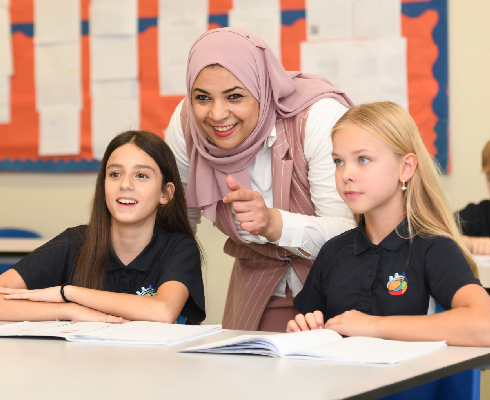English Language Learning (ELL) Programme
Philosophy
GEMS International School is an inclusive school. We celebrate diversity and welcome all students and work closely with families to develop an effective support program to minimize any identified barriers and support progress towards independence in learning.
Students are assessed on entry to ascertain if they have the required level of English language proficiency to be able to access the curriculum independently. Where students are not yet demonstrating the English skills necessary to function within the classroom independently, both socially and academically, enrollment in the English Language Learning (ELL) program will be required.
The ELL program is delivered by specialist teachers who work in coordination with the homeroom and specialist teachers to accelerate English language acquisition and support the student to move towards independence in learning. The ELL team aims to empower students to learn the English skills necessary to function academically, thrive socially, and grow as multilingual global citizens.
How are students identified?
Students are identified through a triangulation of data. This includes;
-
WIDA assessment
-
CAT4 (measure of academic potential)
-
School reports
-
Personal interview
-
Observations/ teacher feedback
The requirements vary across grade levels. Please refer to the Parent Information Handbooks, available on this page.
Levels of ELL Support at GIS
There are two levels of provision for the ELL program; Level 2 and Level 1, as outlined below. The level of support is reviewed on a termly basis and next steps in learning will be outlined in a termly Progress Report. More detailed information regarding the support provisions are outlined in the Parent Information Handbooks, available on this page.
Students will be assigned an ELL Teacher who will be in direct communication with the class teacher and parents. All questions relating to ELL should be directed to the assigned ELL teacher.
Additional Fees
Level 1 support is provided as part of the standard school service.
Level 2 support is costed at an additional 15,000 AED per annum, payable termly in advance.
What information will I receive?
Students identified as requiring ELL support will receive a personalized Student Support Plan. This will outline an overview of their personalized provision and will incorporate personalized targets, aligned to the four language domains identified by WIDA: speaking, listening, reading and writing. You will be invited to meet termly to review progress and discuss next steps.
Dually Identified Students
Students dually identified as a Student of Determination (SD) will receive a Student Support Plan in line with the schools Inclusion Policy. Student Support Plans for dually identified students will be designed collaboratively between the ELL and Inclusion Support Teacher.
Exiting the Program
The length of time the student is in the program varies depending on the student and individual needs. Some students will make rapid progress and may only need support for a short amount of time. Others need more extensive language support until they achieve the required language proficiency, this can take a number of academic years.
The ELL teacher in coordination with teachers, will review internal and external progress data and discuss exit from the program on a termly basis. Should a student be struggling to make progress, a referral to the inclusion team may be considered.
In order to exit the program, there are several data points that are considered:
-
Students must meet WIDA score requirements for grade level
-
MAP scores
-
CAT4 scores
-
NGRT scores
-
Report card grades
-
Grade level team feedback
Access Accommodation Arrangements
Access accommodation arrangements can include:
-
Additional time
-
Separate Room/ Preferential Seating
-
Word-to-Word Dictionaries/ Single Word Translation
In Grades 11 - 12 students requiring access accommodation arrangements will need to provide the school with a report from an approved Educational Psychologist. Without this evidence students will not qualify for access accommodation arrangements in the Grade 12 World Exams. School provides a list of recommended external providers and can facilitate in school assessments.
-
GIS ELL Policy



